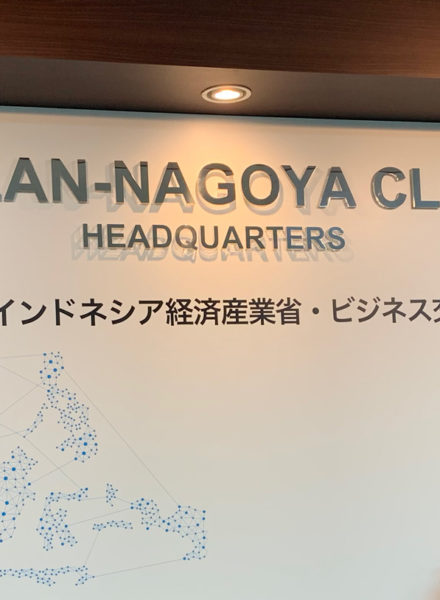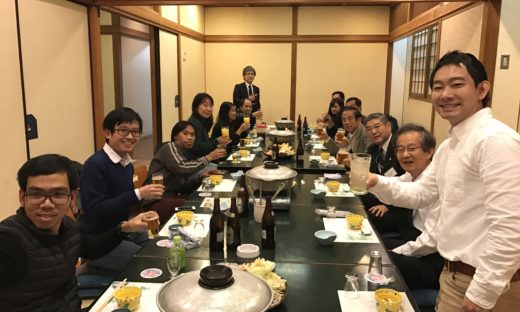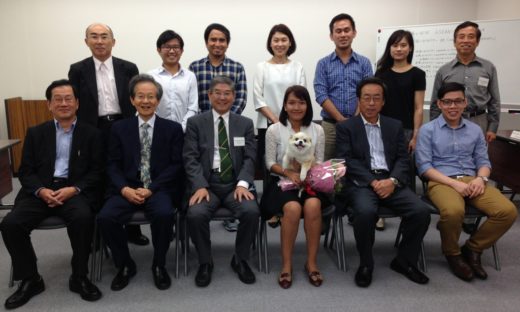第22回定例ミーティング「母国フィリピンを語る」 2016年5月26日 (The 22nd Regular Meeting “Talking about the Philippines” May 26, 2016)
「留学生母国を語る」
~フィリピンの文化とビジネス~
報告者 Marjorie D. Resuello
①「留学生母国を語る」
~フィリピンの文化とビジネス~
これまで多くの留学生に語ってきていただいた「留学生母国を語る」、今回はフィリピン編として、名古屋大学留学生のマージョリーさんから、母国フィリピンの文化やビジネスについて報告いただいた。
フィリピンのASEAN諸国の中での特色としては、英語教育が徹底されており、世界で活躍する人材を輩出しているという点にある。この拝見には、アメリカによる植民地という歴史を経て、アメリカの教育システムを規範としているため、幼稚園の年次から教育言語は英語であり、識字率は92.6%とであるという。
多くの方が、英語とフィリピン語が併存していることに疑問を持たれるかと思うが、両言語が2つの公用語として存在しており、これ以外にもタガログ語をはじめとする176の方言が存在するという、多言語国家であるため、公用語が2つ併存することについて違和感は持っていない。
フィリピンの地理としては、ルゾン島、ビサヤ島、ミンダナオ島という大きな3つの島から構成されており、この3つの島は、国旗の3つの島に象徴として反映されている。このようにフィリピンは非常に広く、マンゴーのような「国果」や透き通った美しい海に代表されるよう、豊かな自然が自慢である。
フィリピンでのビジネスについて話題を移せば、経済特区には多くの日本企業が進出しており、フィリピンの経済特区に対する投資の29.71パーセントは日本によるものである。日本企業からの投資先としてフィリピンが人気を集める理由としては、①経済パートナーとして長い歴史があること、②日本の近いこと(飛行機で約4時間9、③技能と教養がある労働者がいることの3点にあると思われる。
フィリピンは過去5年で平均6.3%の経済成長率を記録しているだけでなく、日本の「改善(カイゼン)」の意識が広まりつつあり、今後も成長を続けて、ASEAN諸国の成長を牽引する一翼を担う国になるであろう。
②日本文化紹介
~日本の温泉文化について~
今回は西孝雄理事より、日本が温泉を愛して止まない文化的背景について、語っていただいた。西理事は温泉施設の支配人をされた経験があり、温泉施設に関する講演経験も豊富であるため、経験に裏打ちされた話を聞くことができた。
日本人には、歴史的に「身も心も清める」という文化的習慣があり、その一環として風呂好きな民族であるといえる。1970年代に風呂付住宅が普及するまでは、日常に利用する「銭湯」と、旅を癒しをテーマとする非日常の「湯治(温泉)とは異なるものであった。
日本において「温泉」と定義づけられるものは、温泉法という法律に定められており、水温が25度以上であり、一定の成分を含有していれば、それは「温泉」に該当する。
ただ、この「温泉」と定義づけられても、三大名泉(有馬、下呂、草津)に代表されるような自噴の温泉と、掘削汲み上げの温泉とは異なるものである。特に、掘削汲み上げの温泉は、1988年の「1億円ふるさと創生事業」により政府が各自治体に1億円の資金を提供したことにより、全国各地で温泉が掘削されて、温泉施設が作られた。
良泉かどうかを見極める基準としては、「源泉かけ流し」か「循環装置」かが重要であり、良泉に入りたい場合は「源泉かけ流し」を選ぶことが大事である。
最後に、温泉の入浴マナーであるが、タオルを湯船に入れてはならないといったルールは当然のこととして、湯温が低い「湯尻」(湯船の湯が外に流れるところ)から入浴し、だんだんと湯温が高い「湯口」(湯が湯船に注がれているところ)へ移動していくのがマナーであることが紹介され、湯船の入り部分にまでマナーがあることについて、留学生から驚きの声が漏れていた。
以上
The business culture in The Philippines
Presenter: Ms. Marjorie D. Resuello
① “Talking about the home country of international students”
At this time, Mr. Marjorie has a chance to introduce his country, The Philippines, the culture and business etiquette in his country.
The Philippines is one of the country in ASEAN that using English as their official language besides Tagalog. English has been taught since they were in the kindergarten and the literacy rate is 92.6%, because the American education system is implemented after the history of colonization by the United States.
Many people may be skeptical about the coexistence of English and Filipino, but both languages exist as two official languages, and there are 176 dialects including Tagalog. Since it is a multilingual nation that exists, there is no sense of discomfort about the coexistence of two official languages.
The geography of the Philippines is composed of three large islands, Luzon, Bisaya, and Mindanao, and these three islands are symbolically reflected in the three islands of the national flag. In this way, the Philippines is very large and boasts abundant nature, as represented by the mango-like “national fruit” and the clear and beautiful sea.
Moving on to the topic of doing business in the Philippines, there are many Japanese companies operating in the special economic zones, and 29.71% of the investment in the special economic zones in the Philippines comes from Japan. The reasons why the Philippines is gaining popularity as an investment destination from Japanese companies are (1) it has a long history as an economic partner, (2) it is close to Japan (about 4 hours by plane), and (3) there are workers with skills and education.
The Philippines was recorded the average economic growth rate of 6.3% over the past five years, but Japan’s awareness of “improvement (kaizen)” is spreading, and it will continue to grow along with the growth of ASEAN countries. The Philippines will be a country that will play a leading role in ASEAN development.
② Introduction of Japanese culture
~ About Japanese hot spring culture ~
This time, Director Takao Nishi talked about the cultural background why Japanese loves hot springs. Mr. Nishi has experience as a manager of hot spring facilities and has a wealth of experience in giving lectures on hot spring facilities, so we were able to hear stories backed by his experience.For example, there is a book called Izumonokunifudoki from the year 733. It documents the daily life and culture of the people of that time period. In regards to the history of Japanese onsen, it contains the following passage:
“There gushed forth a hot srping by the riverside of the village, and area by the riverside was prosperous place. From locas to tourists, regarless of age and gender, everyone gathered there to use the onsen. It was said that if you entered the onsen once, yu would become beautiful, and if you entered twice, any illness would be cured.”
From this, we can guess what Japanese bathing culture looked like 1,300 years ago and why Japanese fell in love with onsen. As it were, we can understand how invaluable the existence of hot springs was to people who lived in the time with access to cosmetics and medical supplies. To this day, hot spring healing culture continues to utilize these onsen benefits to the human body and mind.
The Hot Spring Law, enacted in 1948, stipulates that a water fountainhead can be accredited as an onsen if it contains at least one of 19 designated chemical elements, including radon and metabolic acid, or — the controversial clause — if the water is simply 25 degrees or warmer.
What is defined as “hot spring” in Japan is stipulated in the law called the hot spring law, and if the water temperature is 25 degrees or higher and contains a certain component, it corresponds to “hot spring”.
However, even if it is defined as this “hot spring”, the self-propelled hot springs represented by the three major hot springs (Arima, Gero, Kusatsu) and the hot springs pumped up by excavation are different.
The government attributes the rise to the 100 million yen “hometown revitalization” subsidies the government handed out to each municipality in the late 1980s. With the money, many towns set up public onsen baths to lure tourists.
As a criterion for determining whether or not it is a good spring, it is important to select “flowing from the source” or “circulation device”, and if you want to enter the good spring, it is important to select “flowing from the source”.
Regarding the etiquette of bathing in hot springs, as a matter of course, the rule that towels should not be put in the bathtub is taken from the low temperature “Yujiri” (where the hot spring water flows out), and gradually It was introduced that it is etiquette to move to the hot spring “Yuguchi” (where the hot water is poured into the bathtub), and international students were surprised that there is etiquette even at the entrance of the bathtub.






